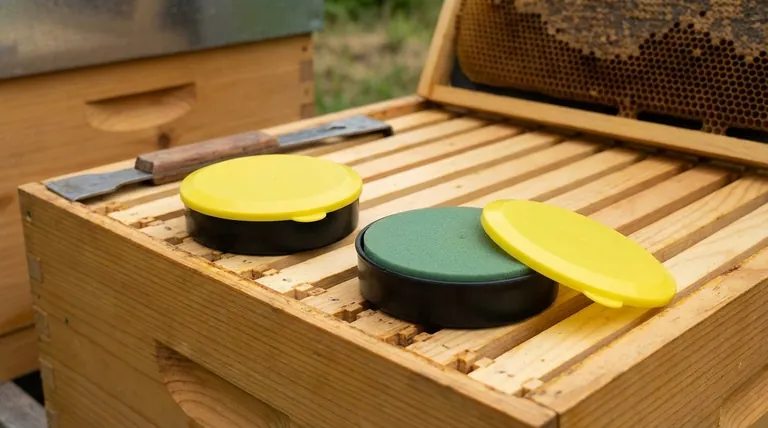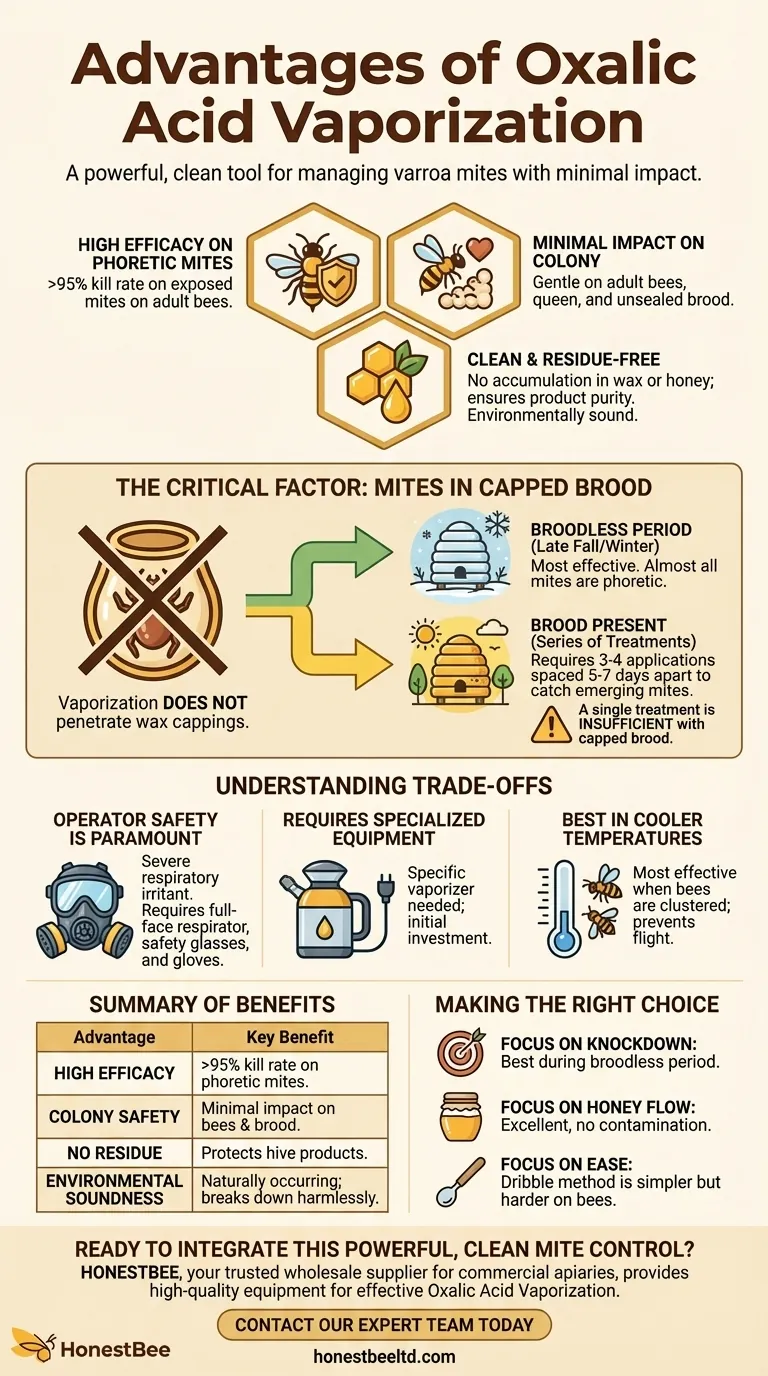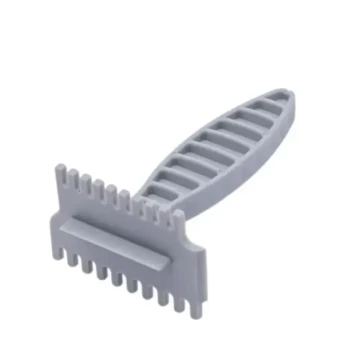The primary advantages of Oxalic Acid Vaporization are its high effectiveness against varroa mites on adult bees, its minimal impact on the colony, and the fact that it leaves no harmful residue in honey or wax. This makes it a powerful and clean tool for managing mite populations, especially during periods when the colony has little to no capped brood.
Oxalic Acid Vaporization is a highly effective treatment for phoretic varroa mites—those on adult bees—but its success depends on understanding its limitations, particularly concerning mites protected within capped brood cells.

Why Vaporization is a Preferred Method
Oxalic Acid (OA) is an organic acid naturally found in many plants, including honey itself. When used as a vapor treatment, it provides several distinct benefits for the modern beekeeper.
High Efficacy on Phoretic Mites
The vaporized oxalic acid crystals form a fine dust that coats the surfaces inside the hive, including the bees themselves. This is lethal to the varroa mites that are physically attached to adult bees, known as phoretic mites.
When applied correctly, efficacy rates can be exceptionally high, often exceeding 95% against these exposed mites.
Minimal Impact on Bees and Brood
When dosed properly, oxalic acid vapor has a very low impact on adult bees, the queen, and unsealed brood. It is considered one of the gentler treatments available, avoiding the harsh chemical stress some synthetic miticides can cause.
Clean and Residue-Free
Perhaps one of its most significant advantages is that oxalic acid does not accumulate in the wax or honey of the hive. It is a natural constituent of honey, and proper treatment does not raise its concentration to harmful levels, ensuring the purity of your hive products.
Environmentally Sound
As a naturally occurring organic compound, oxalic acid breaks down into harmless substances. When used as directed, it poses no threat to the surrounding environment, unlike some persistent synthetic alternatives.
The Critical Factor: Mites in Capped Brood
A common point of confusion is how vaporization affects mites reproducing within sealed brood cells. Understanding this is key to using the method effectively.
The Limitation of a Single Treatment
A single oxalic acid vaporization treatment does not penetrate the wax cappings of brood cells. Mites safely reproducing inside these cells are completely unaffected by the treatment.
Any claim that a single vaporization kills mites in capped brood is incorrect and will lead to failed mite management.
Achieving Comprehensive Control
To achieve control over the entire mite population, you must account for the brood cycle. This is done in one of two ways:
- Treat During a Broodless Period: The most effective application is during a natural brood break, such as in late fall or winter. With no capped brood, nearly all mites are phoretic and exposed to the treatment.
- Use Multiple Treatments: If treating when brood is present, a series of 3-4 treatments spaced about 5-7 days apart is required. This ensures you kill mites that emerge with newly hatched bees before they can re-enter another cell to reproduce.
Understanding the Trade-offs
While highly effective, vaporization is a specific tool with its own requirements and risks that must be managed properly.
Operator Safety is Paramount
The vaporized fumes of oxalic acid are a severe respiratory irritant and are dangerous if inhaled. It is absolutely essential to use proper Personal Protective Equipment (PPE), including a full-face respirator with acid gas cartridges, safety glasses, and gloves.
Requires Specialized Equipment
Application requires a specific tool called a vaporizer, which heats the oxalic acid crystals to the correct temperature. This represents an initial financial investment compared to other treatment methods like dribbling.
Best Used in Cooler Temperatures
The treatment is most effective when temperatures are cool enough for the bees to be clustered together inside the hive. This ensures maximum exposure to the vapor and prevents bees from flying out during the application.
Making the Right Choice for Your Apiary
Choosing your varroa mite treatment depends entirely on your specific goals and the time of year.
- If your primary focus is a highly effective "knockdown" during a broodless period: Oxalic Acid Vaporization is arguably the best tool for the job.
- If your primary focus is treating during the summer honey flow: This method is an excellent choice because it will not contaminate the honey you plan to harvest.
- If your primary focus is ease of use with minimal equipment: You might consider the oxalic acid dribble method, though it can be slightly harder on the bees.
Ultimately, using Oxalic Acid Vaporization correctly is a cornerstone of a responsible and effective integrated pest management strategy for your hives.
Summary Table:
| Advantage | Key Benefit |
|---|---|
| High Efficacy | >95% kill rate on phoretic mites when applied correctly. |
| Colony Safety | Minimal impact on adult bees, the queen, and unsealed brood. |
| No Residue | Leaves no harmful residues in honey or wax, protecting hive products. |
| Environmental Soundness | Naturally occurring compound that breaks down harmlessly. |
Ready to integrate this powerful, clean mite control into your IPM strategy?
As a trusted wholesale supplier to commercial apiaries and distributors, HONESTBEE provides the high-quality equipment and supplies you need for effective oxalic acid vaporization. We help you protect your colonies and your honey harvest.
Contact our expert team today to discuss your needs and elevate your beekeeping operation.
Visual Guide

Related Products
- Adjustable Formic and Acetic Acid Dispenser for Bee Mite Treatment
- Professional Galvanized Hive Strap with Secure Locking Buckle for Beekeeping
- Langstroth Screen Bottom Board for Beekeeping Wholesale
- Economy Small Scale Honey Dryer Dehumidifier Thickening Machine
- Professional Pneumatic Wire Embedder for Beehive Frames
People Also Ask
- What are the symptoms of Varroa Mite Syndrome (VMS)? Recognizing the Signs of Colony Collapse
- What should be done after treating a colony for varroa mites? A Step-by-Step Guide to Verifying Success
- What are some common predators and pests that target beehives? Protect Your Hives from Bears, Mites, and Beetles
- What is the optimal time for varroa mite control in nucs? Maximize Efficacy with Perfect Timing
- What should beekeepers do to manage varroa mites effectively? Adopt a Proactive Monitoring Strategy



















